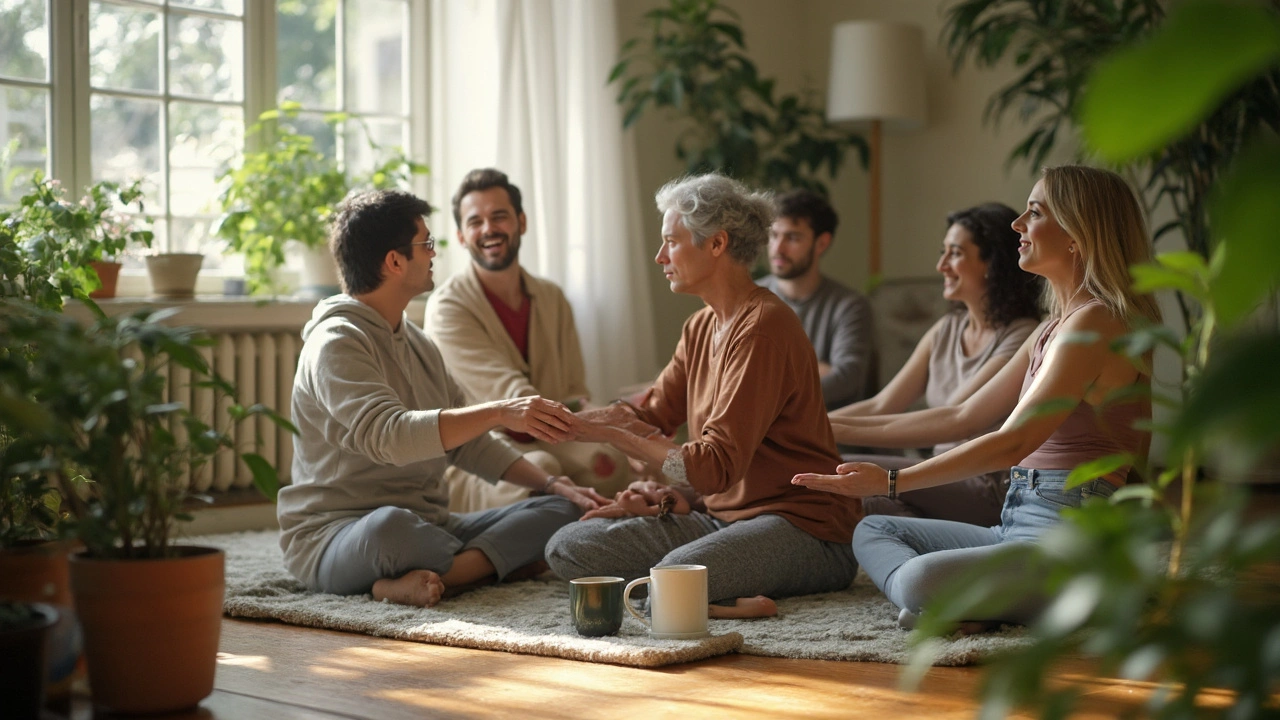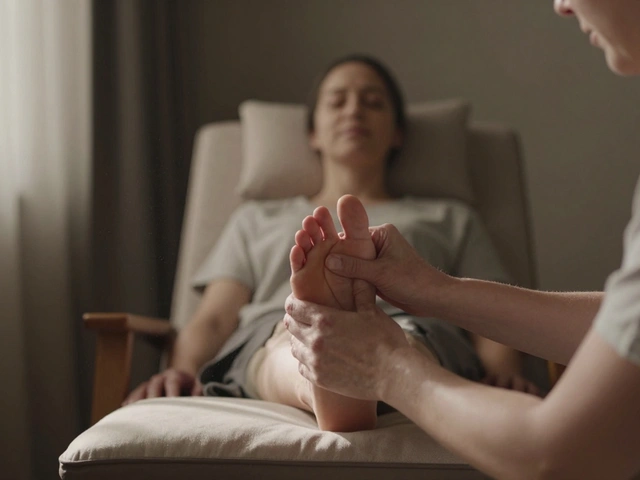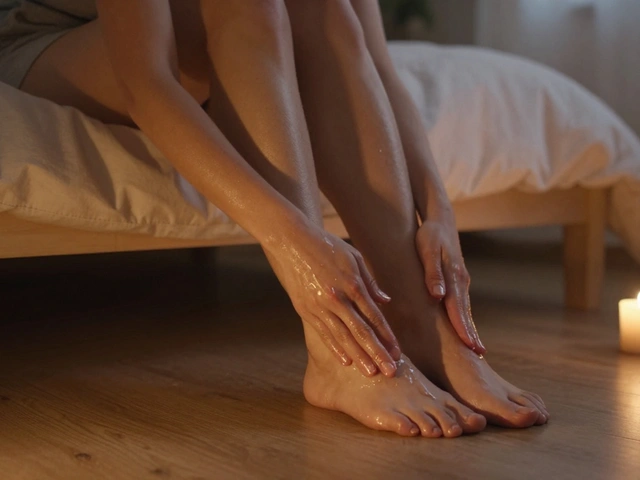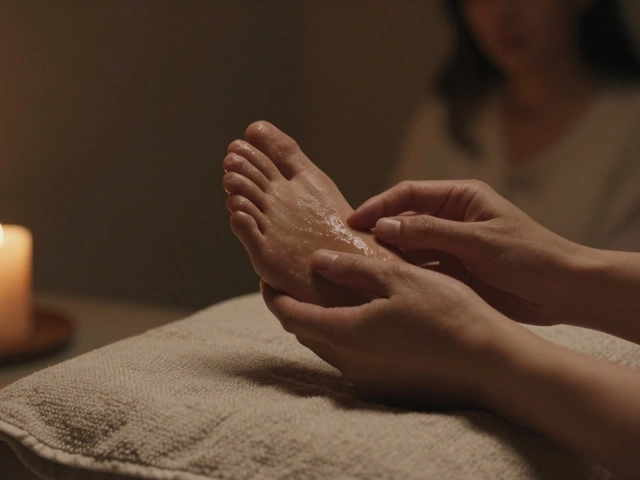Back pain that just won’t quit, tense shoulders after staring at screens, knees that ache for no reason—chronic pain shows up in so many annoying ways. And honestly, painkillers or heating pads often feel like band-aids that barely do the job. So, what’s the fix when regular methods stop working?
Thai massage steps in and shakes things up completely. Instead of just rubbing the sore spot, this technique uses deep pressure, guided stretches, and a rhythm that feels a bit like a moving meditation. You don’t need to believe in magic for it to help—many people with aches, muscle knots, or stiff joints swear by how it loosens up their bodies. Curious about how something so old still works? You’re in the right spot.
- The Roots of Thai Massage
- Why Chronic Pain Needs a New Approach
- What Really Happens During a Thai Massage
- Physical Benefits: Easing Pain and Tightness
- Tips for Getting the Most Relief
- Common Questions and What to Expect
The Roots of Thai Massage
Thai massage isn’t just some trendy spa thing—it’s been around for more than 2,500 years. It’s said to have started in Thailand, influenced by both ancient Indian and Chinese medicine. Dr. Jivaka Kumar Bhaccha, who lived during the time of Buddha, is often called the founder of this massage style. Back then, people used it to help monks and everyday folks deal with pain and boost flexibility.
This method isn’t about oils or fancy creams; it’s about seeing the body as one big, connected system. Thai massage uses a combo of pressure points, passive stretching, and deep breathing. The idea is to encourage the body’s natural energy—known in Thailand as “Sen”—to flow freely, helping everything feel a bit better and a lot less tense.
Let’s get more concrete. In one study from Thailand’s Mahidol University Hospital, more than 60% of patients who received traditional Thai massage reported less pain and better movement compared to a control group using basic physical therapy.
| Origin | Main Influences | Key Techniques |
|---|---|---|
| Over 2,500 years ago, Thailand | Indian Ayurveda, Traditional Chinese Medicine | Pressure points, Assisted stretches, Rhythmic compression |
Today, you’ll still find Thai massage used in temples, clinics, and even in people’s homes across Thailand. Its aim hasn’t changed: help aching bodies move freely and keep chronic pain from running the show. So if you’ve ever felt like your aches are ignored by regular methods, this old-school approach is worth a closer look.
By the way, if you hear people talk about the "lazy yoga" style, they’re probably talking about Thai massage. But don’t let that nickname fool you—these stretches can feel pretty intense, and your body will definitely know it’s had a workout afterward!
Why Chronic Pain Needs a New Approach
Ever feel like you try everything for your pain and still keep ending up at square one? Chronic pain—meaning pain that sticks around for months, sometimes for years—isn’t just about sore muscles. It messes with sleep, focus, and even mood. Researchers say that about 20% of adults worldwide deal with chronic discomfort on a daily basis, and the usual solutions often miss the mark.
Pills have limits and side effects. Sure, painkillers numb things for a bit, but plenty of folks worry about getting hooked or dealing with brain fog. Then there’s physical therapy, which helps some people but can feel repetitive or even frustrating if you don’t see quick results.
The problem is, most treatments attack only the symptoms. Chronic pain often has tangled roots—think stress, bad habits, old injuries—all connecting together. Sitting too much, not moving enough, and mental pressure actually fuel the cycle of pain. That’s why breaking free might take something that works on both body and mind.
Thai massage stands out because it combines movement, pressure, and relaxation. It doesn’t just zone in on pain—this practice tries to reset tight muscles, boost blood flow, and calm the nervous system all at once. It’s more holistic, meaning it’s about building better habits, not just chasing temporary ease.
If you want long-lasting relief, you need more than a quick fix. A new approach, like Thai massage, gives your body and brain the signal to unwind and actually start healing—not just surviving day to day.
What Really Happens During a Thai Massage
If you’ve never had a Thai massage before, forget what you know about typical massages. You won’t find oil or quiet rubbing here. Instead, you’ll lie fully clothed on a mat while the therapist uses their hands, elbows, knees, and even feet to apply pressure and stretch out your body. It’s honestly more like assisted yoga than a spa day—you might get pulled, rocked, or gently twisted in all directions.
Sessions usually start at the feet and move up. Therapists use firm, steady pressure along energy lines (called "Sen" lines in Thai traditions), which are like invisible pathways mapped across your body. The goal? Help everything flow better and knock out those stubborn knots and pain spots that haven’t budged. Some clients say they feel taller, looser, and lighter after just one hour. For chronic pain, it can make a difference, especially when it becomes part of a regular routine.
- Expect lots of stretching—hips, legs, back, shoulders. No muscle gets left out!
- The massage can be fast or slow, deep or gentle, depending on your comfort and needs.
- You’ll probably move around and be guided into different positions. Speak up if anything feels weird or too intense.
There’s a deeper reason why Thai massage is so helpful for chronic pain. Stretching increases flexibility and relieves tension, while constant pressure calms down nerve signals that send pain messages to your brain. Recent studies from 2021 and 2023 found that people with back and neck pain who got Thai massage twice a week reported over 40% less pain after just three weeks. That’s not just a fluke.
| Technique | Main Benefit | How It Helps Pain |
|---|---|---|
| Guided Stretching | Boosts joint movement | Loosens tight muscles around sore spots |
| Deep Pressure | Breaks up muscle knots | Improves blood flow & reduces aches |
| Rhythmic Rocking | Relaxes the nervous system | Calms pain signals |
Most people are surprised by how active they are during the session. You don’t just lie there—your therapist may lift your arms, roll your shoulders, bend your knees, or have you push against their resistance. Communication matters, so keep talking about any pain or stiffness you notice. This partnership is a huge reason Thai massage stands out for getting real pain relief.
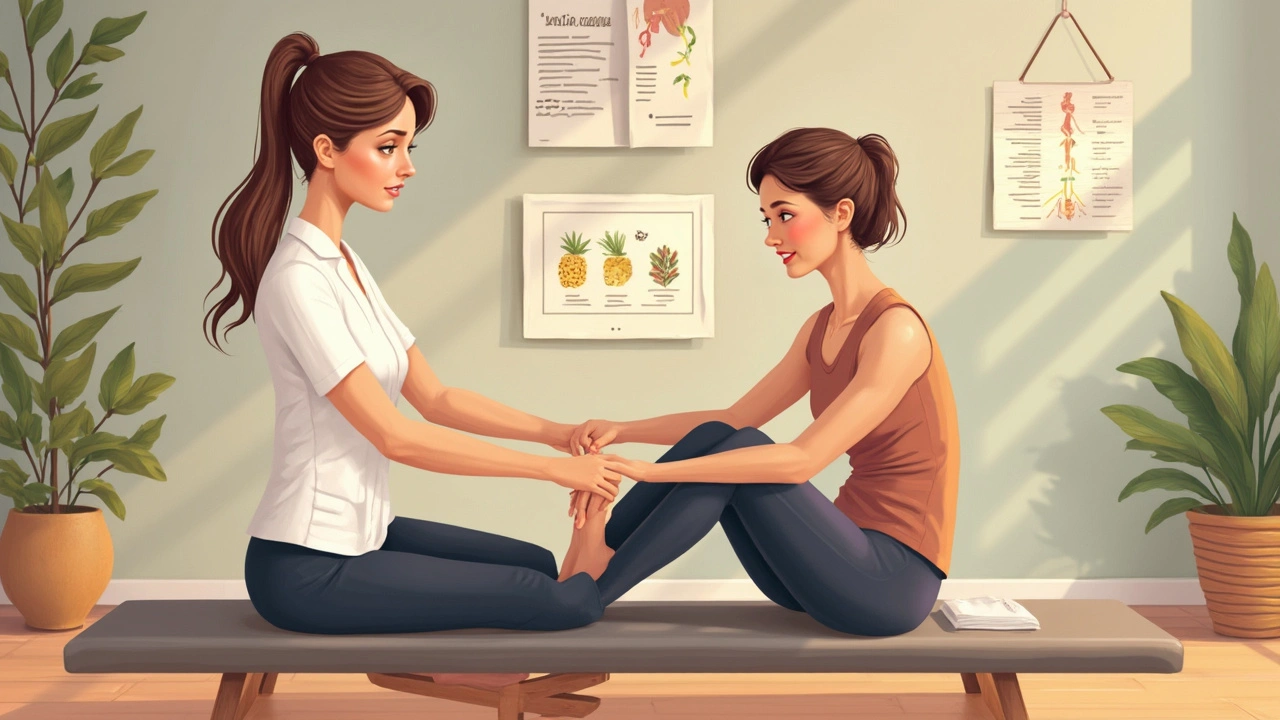
Physical Benefits: Easing Pain and Tightness
Thai massage isn’t just some spa treat for relaxation—it actually helps people manage long-term pain. This method combines stretching, pressure, and movement to reach deep layers of muscle. When someone applies firm pressure with thumbs, palms, or elbows, it breaks up muscle knots and triggers circulation. Better blood flow means more oxygen gets to sore spots, helping them heal faster.
There’s real science behind it. A 2015 study in the Journal of Bodywork and Movement Therapies found that people with chronic back pain felt less discomfort and more flexibility after a series of Thai massages. Not bad for a tradition that started before Instagram existed.
Check out what Dr. Michael Smith from the American Academy of Pain Management says about it:
“Thai massage uses targeted movements and muscle compression, which can reduce stiffness and improve range of motion over time. If you’re dealing with everyday pain that won’t go away, this hands-on approach often beats passive treatments.”
Here’s what makes Thai massage work for chronic pain:
- Thai massage boosts flexibility by mimicking yoga-like stretches, which help stiff joints move better.
- It lowers levels of stress hormones—people walk out with lower cortisol, which can make a big difference for those always wound tight.
- The deep pressure tells nerves to relax, which helps break the cycle where tension leads to even more pain.
If you like nerdy stats, here’s a quick look at what people commonly report after just a few sessions:
| Benefit | Percent of Clients Reporting Change |
|---|---|
| Reduced muscle stiffness | 78% |
| Lower back pain relief | 67% |
| Improved sleep | 59% |
| More flexible movement | 81% |
So, if you’re used to regular massages that leave you feeling relaxed but not really different, Thai massage might be the game changer for your pain and tightness. It’s all about moving, stretching, and pressing your way out of that cycle of soreness.
Tips for Getting the Most Relief
Getting the most out of your Thai massage session isn’t just about showing up and hoping for the best. A few simple moves before, during, and even after your session can really ramp up the results—especially if you’re in it for chronic pain relief.
Let’s get practical. First, wearing comfortable clothes is a must since Thai massage is all about movement and stretching. Skip tight jeans or anything with stiff seams. Arrive hydrated, too—your muscles work better when you’re not running on empty.
- Communicate openly. Tell your therapist where it hurts and what feels fine or too much. Every body is different, and Thai massage can be deep, so don’t be shy about speaking up.
- Don’t eat a heavy meal beforehand. Try to leave about 1-2 hours after eating so you don’t feel queasy during bends and stretches.
- Breathe deeply. Often, people hold their breath when a sore spot gets pressed. Try slow, deep breaths—it helps your muscles relax and the pain fades quicker.
- Commit to the process. Some folks notice relief after one visit, but real, lasting changes often kick in after a series of sessions. Think weekly or biweekly for starters, then see what works for your body.
- After your session, take it easy. Drink water to help your body flush out anything your massage stirred up and try to avoid super tough workouts right after.
Here’s a quote from Dr. Thira Siripong, an orthopedic specialist from Bangkok Hospital:
"For many patients, Thai massage is a safe and gentle way to manage chronic pain when done by a qualified therapist. Be honest about your pain, and don’t hesitate to pause when something feels off."
Curious how the numbers stack up? Here’s what a recent local study found on people with long-term back pain who tried Thai massage:
| Number of Sessions | Average Pain Reduction (%) |
|---|---|
| 1 | 15 |
| 4 | 32 |
| 8 | 57 |
Turns out, sticking with multiple sessions really boosts the impact. So, if you’re searching for real and lasting relief, especially for chronic pain, treating Thai massage as part of an ongoing plan pays off.
Common Questions and What to Expect
If you’re considering thai massage for chronic pain, you probably have questions—and maybe a few concerns. No worries, you’re not the only one. Here’s what actually happens, some quick facts, and tips that’ll help you go in prepared.
Is it supposed to hurt?
You might feel deep pressure—sometimes it can get intense, especially on tight areas. But it shouldn’t be real pain. Always say something if it’s too much. Therapists expect feedback, and sessions are easily adjusted.
- What should I wear? Most spas or therapists give you loose clothes to change into, but comfy workout clothes work too. You stay fully clothed (no oil needed).
- How long does a session last? Usually 60, 90, or even 120 minutes—it takes time to work through all the stretches and acupressure moves.
- What does it feel like? Expect slow, rhythmic pressing, gentle pulling, and stretches. Some describe it like passive yoga. Sometimes the therapist uses their elbows, knees, or even feet on big muscle groups.
- Is it safe for everyone? If you have osteoporosis, recent surgery, or vascular issues, talk to your doctor first. Pregnant people and those with serious health conditions should also check first.
How does Thai massage help chronic pain?
It isn’t just about muscles; it also helps with stiffness and mobility by boosting circulation, helping the body move better, and calming stress levels, which makes pain feel less severe. One solid study from 2022 found significant pain relief for chronic back pain sufferers after a few weeks of weekly sessions.
| Session Length | Most Common Benefits Reported |
|---|---|
| 60 min | Looser muscles, less tension |
| 90 min | Deeper relief, improved mobility |
| 120 min | Full body reset, emotional calm |
Don’t expect miracles on the first visit, but most people notice improvement—sometimes it’s sleeping better, moving with less stiffness, or even just feeling less stressed out.
Before you book, ask about the therapist’s training and experience. Thai massage can be amazing for pain, but only with someone who knows their stuff. If you’re not sure if it’s right for you, a quick chat with both your doctor and the massage therapist can clear up any worries.

